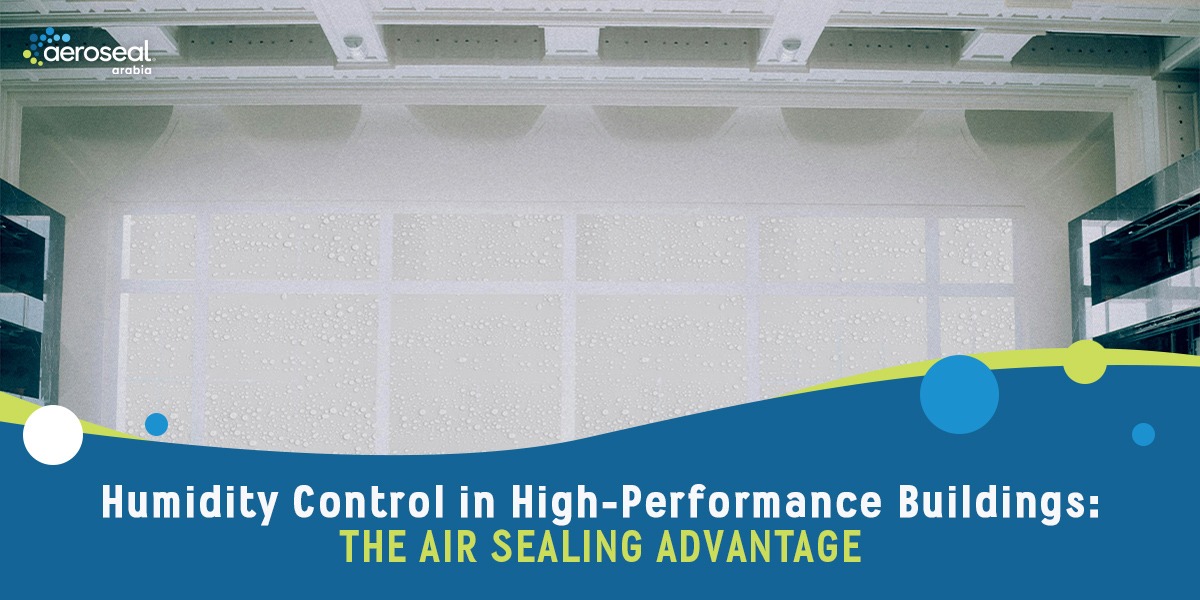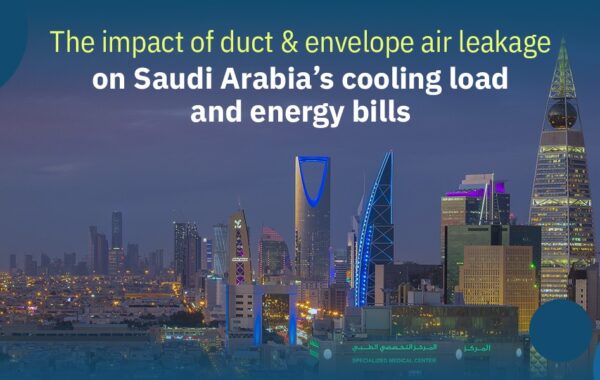
Humidity Control in High-Performance Buildings: The Air Sealing Advantage
Humidity is one of the most overlooked challenges affecting building performance, indoor comfort, and energy efficiency. Even the most advanced facilities can struggle when humid air enters through leaks in the building envelope or ductwork. For high-performance buildings in Saudi Arabia’s hot and humid climate, controlling humidity is essential to maintain durability, air quality, and occupant health.
Why Humidity Control Matters
Excess humidity can quietly damage a building from within. It can weaken insulation, corrode metal components, and create perfect conditions for mold growth. According to the U.S. Environmental Protection Agency (EPA), high indoor humidity is a major cause of poor air quality in modern buildings. When warm, humid air seeps into cooler spaces, condensation forms on walls and ceilings, leading to long-term structural problems and increased maintenance costs.
In commercial environments such as hospitals, offices, or educational facilities, uncontrolled humidity doesn’t just affect comfort it can impact sensitive equipment, reduce energy efficiency, and compromise the safety of occupants.
The Link Between Air Leakage and Humidity
Air leakage is one of the main reasons humidity becomes a problem indoors. Even small gaps or cracks in the building envelope allow humid air to enter or escape. As this air meets cooler surfaces, it condenses into moisture, leading to mold, peeling paint, and declining air quality.
A well-sealed building envelope keeps humidity under control. By minimizing air leakage, interior spaces maintain balanced humidity levels and prevent condensation within walls and ceilings. The result is a more stable and healthier indoor environment.
How Air Sealing Helps Manage Humidity
Air sealing plays a key role in protecting buildings from humidity-related issues. Advanced technologies like Aeroseal make this process more efficient and precise. Aeroseal works from the inside, sealing leaks throughout duct systems and hidden cavities without requiring invasive construction. It distributes a safe, water-based sealant that seals even the smallest openings, preventing humid air from entering or escaping.
Once sealed, the building performs better overall energy use drops, HVAC systems operate more efficiently, and interior humidity remains steady. This stability helps prevent mold growth, corrosion, and other humidity-related damage.
Health and Performance Advantages
Effective humidity control improves both health and comfort. When humidity stays balanced, mold and dust mites are less likely to thrive, reducing respiratory problems and allergies. Occupants experience cleaner air, fewer odors, and more consistent temperatures throughout the building.
In commercial facilities, consistent humidity also protects finishes, furnishings, and equipment from wear and damage. It extends the lifespan of HVAC systems and reduces repair costs.
Meeting Modern Building Standards
Today’s leading standards such as ASHRAE 62.2, LEED, and Passive House all highlight airtightness and ventilation as essential for healthy indoor environments. These standards recognize that a well-sealed building with controlled ventilation delivers superior comfort, energy savings, and indoor air quality.
Saudi Arabia’s Vision 2030 initiatives emphasize sustainability and energy efficiency, making air sealing and humidity management critical elements of modern construction. By ensuring compliance with performance standards and local codes, developers can achieve higher-quality, longer-lasting buildings.
The Role of Aeroseal in Saudi Arabia’s Climate
Saudi Arabia’s extreme temperatures and fluctuating humidity levels make air sealing more than just a technical upgrade it’s a necessity. Aeroseal technology ensures that conditioned air stays inside while keeping external humidity out. This not only improves indoor air quality but also reduces the workload on HVAC systems, saving energy and lowering operational costs for commercial buildings.
By integrating Aeroseal solutions into new constructions and retrofits, contractors can achieve airtight results that align with Saudi Vision 2030’s green building objectives. The technology’s precision and proven results make it an ideal choice for commercial developments, government facilities, and healthcare buildings across the Kingdom.
Conclusion
Managing humidity is far more than just maintaining comfort—it’s about protecting your building, your investment, and the health of those inside. By integrating advanced air sealing solutions like Aeroseal, contractors and building owners in Saudi Arabia can achieve long-term protection against humidity intrusion while meeting high-performance goals.
When air and humidity stay balanced, buildings stay stronger, cleaner, and more efficient just as they were designed to be.



